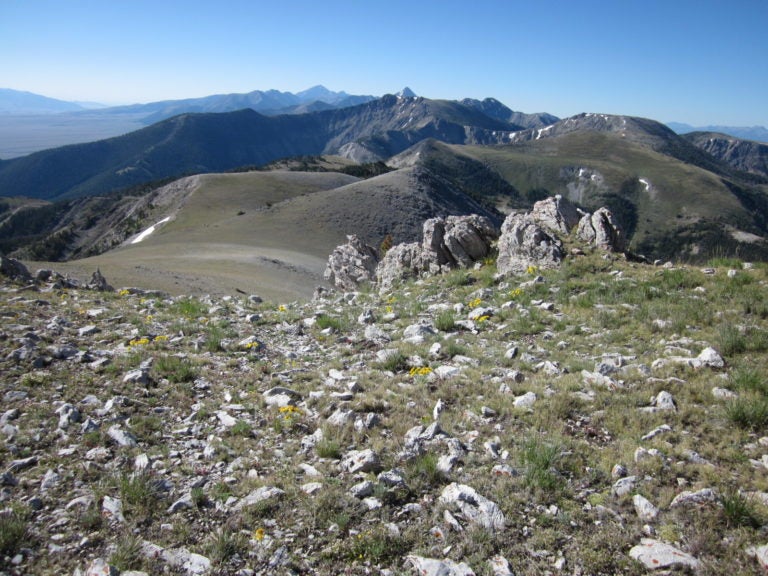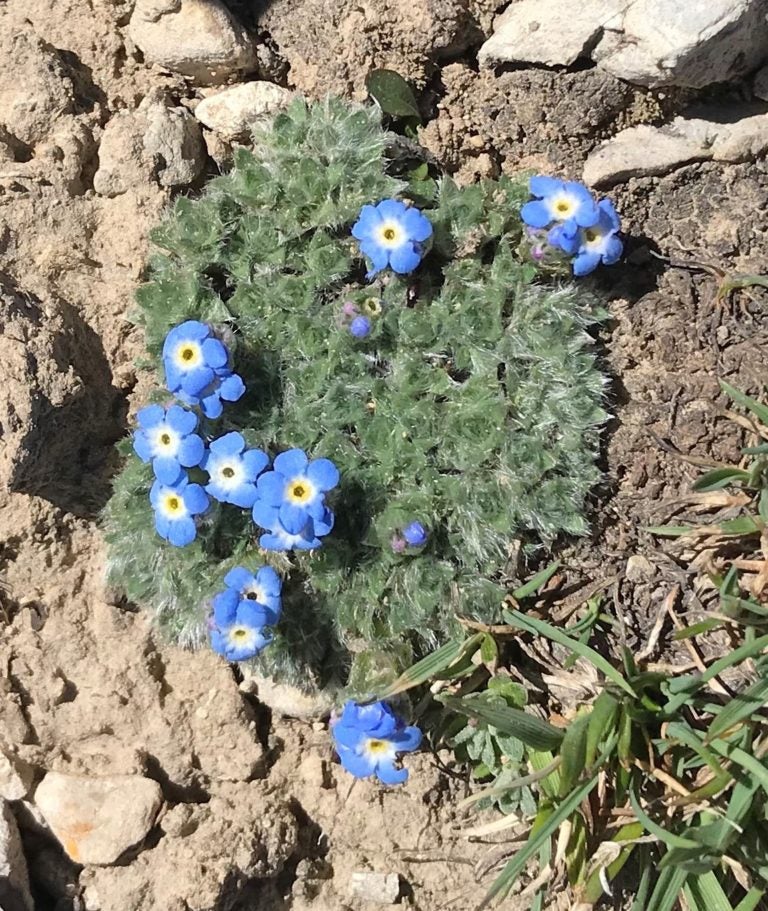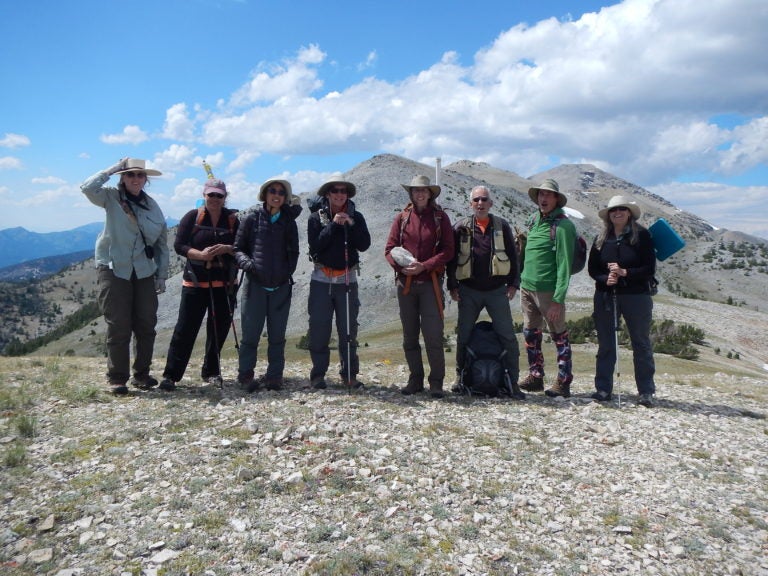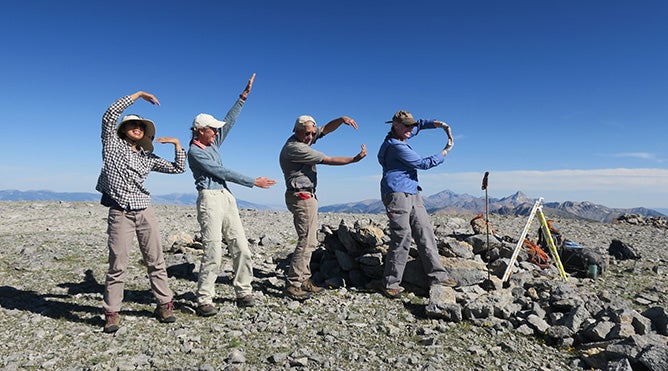
In July, a team of scientists from all around Idaho established Idaho’s first long-term alpine monitoring sites as part of the worldwide GLORIA program. GLORIA stands for Global Observation Research Initiative in Alpine Environments, and is a network of hundreds of alpine mountain-tops spread over tropical, sub-tropical, temperate boreal, and polar regions over six continents. Summits with no or little human disturbance are chosen, and the same data collection and analysis methods are used at all sites. Data are collected at each site at 5-10 year intervals, and having such a large number of sites with standardized data allows comparative world-wide assessments of alpine ecosystems, and how they may be changing over time, and in particular, in relation to climate change.

About the Trip
The Idaho GLORIA team sampled three high summits in the Lemhi Range. The team established base camp at Mill Creek Campground in the Salmon-Challis National Forest from July 15 – 20, 2018, and made their way up to a summit each day via a combination of four-wheel drive, UTV, and trekking.
Over the five days of fieldwork, the Idaho GLORIA team, cataloged a total of 82 plant species, including two species of conservation concern in Idaho: Douglass’ Wavewing (Cymopterus douglassii) and Whitebark Pine (Pinus albicaulis).
High elevation ecosystems in Idaho are important for watershed, wildlife, biodiversity, aesthetic, and other values. GLORIA monitoring is relevant for Idaho because alpine habitat is relatively limited in distribution and extent in the state. Loss/contraction of alpine habitat due to climatic changes has the potential to impact Idaho’s high elevation biota. GLORIA monitoring can provide land managers and others interested in high elevation ecosystems a better understanding of the relationships linking potential changes in the climate to alpine biodiversity. It provides a program to help document, monitor, and assess possible long-term shifts and vulnerabilities to alpine vegetation in the Lemhi and other nearby mountain ranges. This information has the potential to inform and help guide future conservation activities benefiting Idaho’s iconic alpine landscapes.
The Team


The Idaho GLORIA effort was led by Michael Mancuso and Rose Lehman . The team of scientists helping with the effort include: Anne Halford, Lynn Kinter, Beth Corbin, Jessica Irwin, Allison Busier, Jim Cane, Jodi Brandt, and Paul Allen. The US Forest Service Intermountain Region and Idaho Bureau of Land Management provided funding for the project. In-kind funding sources included the Caribou-Targhee National Forest, U.S. Forest Service Rocky Mountain Research Station, Idaho Bureau of Land Management, Idaho Department of Fish and Game, and Boise State University. Support was also provided by the Idaho Native Plant Society through their Education, Research, and Inventory Grant program.
The Products
Mancuso, M and R. Lehman. 2020. Global Observation Research Initiative in Alpine Environments: Establishing GLORIA Long-term Alpine Monitoring in the Lemhi Mountains, Idaho. Report prepared for the Caribou-Targhee National Forest and Salmon-Challis National Forests, Idaho.